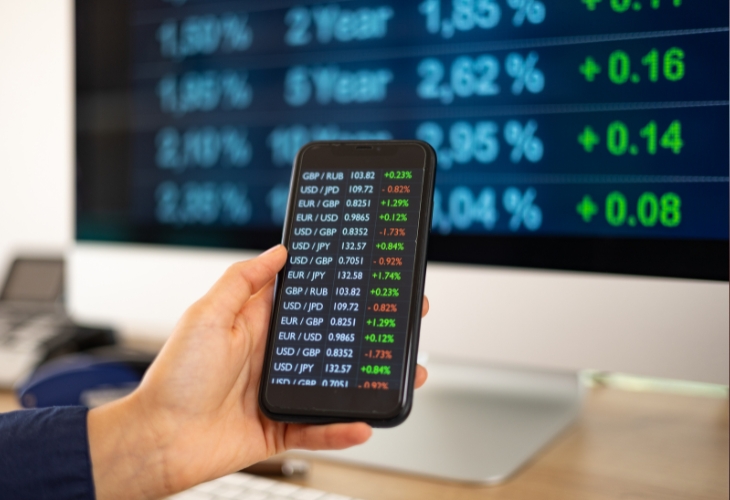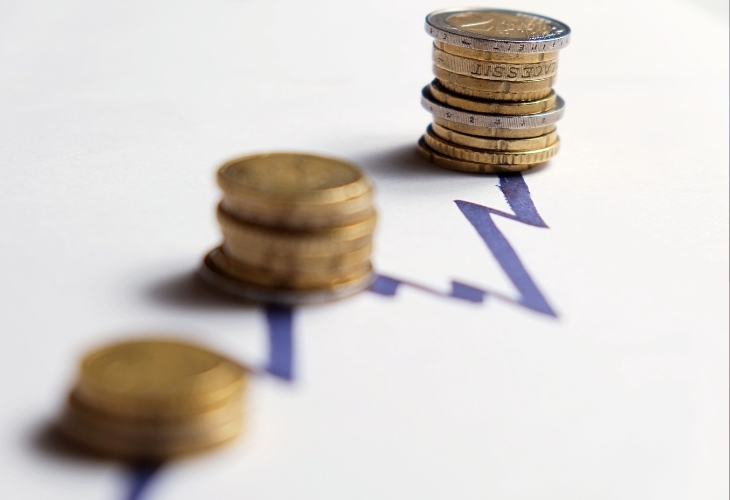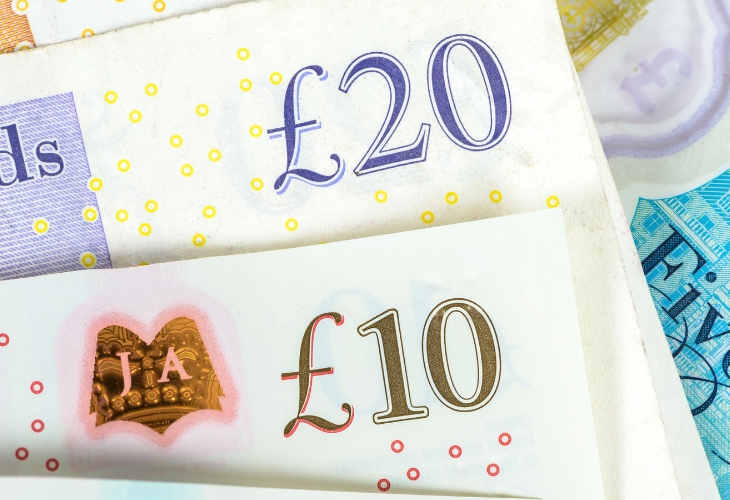Euro Rate of Exchange History
The exchange rate between the euro (EUR) and the British pound (GBP) is an important benchmark for businesses, investors, and financial planning. Tracking its trends provides insight into economic conditions and helps guide key decisions.
In this article, we’ll explore how the rate has evolved over time, the factors that influence it, and the tools available to analyze historical data. With a better understanding, you can make more informed financial decisions and anticipate market movements with confidence.
EUR to GBP Exchange Rate
1 EUR = — GBP
Last updated: —
Summary of Contents
This article explores the Euro Rate of Exchange History, covering key aspects like:
- Introduction to the EUR/GBP Exchange Rate
Understand the significance of the EUR/GBP exchange rate and how it reflects changes in the global financial and political landscape. - Factors Influencing the EUR/GBP Exchange Rate
Learn how political stability, market speculation, and economic indicators impact exchange rate fluctuations. - Historical Trends in the EUR/GBP Exchange Rate
Discover how events like Brexit, the COVID-19 pandemic, and stable periods have shaped the EUR/GBP rate over the last decade. - Analyzing Exchange Rate Trends by Date
Explore how specific dates, such as July 31st, highlight short-term market movements and key economic shifts. - Tools for Calculating Exchange Rates
Find out about tools like the “Euro to Pound on Specific Date Calculator” and how they help with financial planning and decision-making. - Implications of Exchange Rate Trends
Understand the practical impact of exchange rate trends on travel, tourism, large transactions, and investment strategies. - How Cambridge Currencies Can Help
Discover how Cambridge Currencies provides expert insights and detailed historical data to guide your financial decisions.
Understanding the EUR/GBP Exchange Rate
The EUR/GBP exchange rate shows how many British pounds are needed to buy one euro. This number highlights the economic connection between two major European economies.
Several factors influence this exchange rate, including economic indicators, geopolitical events, and market trends. Each of these can cause changes in the rate, reflecting shifts in economic conditions or investor confidence.
Understanding these factors is essential for predicting future movements and making informed financial decisions.
Factors Influencing Exchange Rate Fluctuations
Several elements can cause the EUR/GBP exchange rate to fluctuate. Key factors include:
- Central Bank Policies:
Decisions by the European Central Bank (ECB) or the Bank of England (BoE), such as changes in interest rates or stimulus programs, have a direct impact. For example, the BoE raising interest rates to combat inflation can strengthen the pound relative to the euro. - Political Events and Stability:
Major events like Brexit negotiations, European elections, or unexpected political resignations can cause rapid shifts. For instance, the uncertainty during the 2016 Brexit referendum led to significant weakening of the pound against the euro. - Trade Relationships:
The balance of trade between the UK and the Eurozone influences demand for their currencies. For example, if the UK imports more goods from the EU than it exports, demand for euros increases, potentially weakening the pound. - Economic Indicators:
Data such as unemployment rates, GDP growth, and retail sales figures provide insights into the health of each economy. Strong UK retail sales, for example, might boost the pound as it signals economic resilience. - Global Events and Crises:
Events like the COVID-19 pandemic or the 2022 energy crisis can create uncertainty, affecting currency values. During the early pandemic, the euro strengthened against the pound due to market perceptions of the EU’s quicker recovery. - Market Sentiment and Speculation:
Forex traders’ perceptions of future economic conditions can drive exchange rate changes. For instance, if traders anticipate stronger economic growth in the Eurozone, they may buy euros, increasing its value against the pound. - Commodity Prices:
Changes in key commodities like oil and natural gas can influence exchange rates, especially for import-reliant economies. For example, rising energy prices can weaken the pound if the UK faces higher import costs compared to the Eurozone.

Historical Trends of the EUR/GBP Exchange Rate
Over the past decade, the EUR/GBP exchange rate has seen significant fluctuations. A EUR GBP graph spanning 10 years shows key events. For instance, the Brexit referendum in 2016 caused a sharp rise in the euro’s strength against the pound.
Reviewing the euro rate of exchange history, you’ll notice periods of stability. An example is the stability between 2014 and 2015. These periods contrast with more volatile phases during Brexit negotiations and the global pandemic.
The Last 10 Years: A Look Back
The EUR/GBP exchange rate has gone through plenty of ups and downs over the last ten years. Several key moments have stood out:
- 2013-2014: The exchange rate was relatively stable, hovering around 0.85 GBP per euro. This stable period had steady growth and little political drama, keeping markets running smoothly.
- 2015-2016: The rate saw an upward trend, peaking in the aftermath of the Brexit referendum in June 2016. The uncertainty led to a weaker pound. The Brexit vote created uncertainty, making investors question the UK’s future and causing major currency changes. The EUR GBP July 31st exchange rate traded at 0.8465 and stayed relatively stable, until its peak for that year on October 11 2016 trading at 0.9117.
- 2017-2019: The pound gradually regained strength as Brexit negotiations progressed, causing the rate to fluctuate between 0.87 and 0.90. As talks continued, the exchange rate shifted with each political update, affecting the pound.
- 2020: The COVID-19 pandemic brought unprecedented volatility, with rates swinging due to economic uncertainty. Lockdowns and slowdowns across Europe caused quick shifts in currency demand, showing the crisis’s impact on trade.

Analyzing July 31st Trends
Focusing on specific dates can help in understanding short-term fluctuations. Reviewing the EUR/GBP rate on July 31st over the years can reveal trends. It can also uncover surprises tied to events or policies. This date-based analysis can pinpoint specific economic releases or political decisions that might have influenced the market. Such detailed scrutiny is invaluable for short-term traders looking to capitalize on market movements.
Tools for Calculating Exchange Rates
For businesses or individuals, tools can help find exact exchange rates for specific dates. These tools not only help in financial planning but also provide historical insights that are crucial for strategic decision-making.
Euro to Pound on Specific Date Calculator
A “euro to pound on specific date calculator” is super handy for looking back at rates or for accounting. These tools let you enter a date to find the exact rate, helpful for international transactions. Businesses can use this information for financial reporting. Investors might rely on it to analyze past trends. They also use it to predict future movements.
EUR/GBP Graph Analysis
Analyzing graphs that display the EUR/GBP exchange rate over time can provide visual insights into trends and patterns. A 10-year graph shows big trends and key events that affected the rate over time. Graphical analysis helps in identifying cyclical patterns and pivotal events that have shaped the currency’s trajectory. This visual representation simplifies complex data, making it easier for users to understand market dynamics.

Implications of Exchange Rate Trends
Understanding the trends and factors influencing the EUR/GBP exchange rate is crucial for several reasons:
- Strategic Budgeting for Businesses:
Companies operating in multiple markets can use exchange rate trends to forecast and manage operating expenses, such as payroll or supplier payments in foreign currencies. - Predicting Economic Shifts:
Currency rates often act as early indicators of economic trends, helping analysts and stakeholders predict potential downturns or growth phases. - Negotiating Better Contracts:
Businesses involved in cross-border deals can negotiate contracts that account for exchange rate risks, ensuring better pricing and terms. - Identifying Market Sentiment:
Exchange rates often reflect investor confidence in a country’s economy, offering insights into how markets perceive economic and political stability. - Planning Long-Term Investments:
Real estate investors and businesses with international expansion plans can strategize based on long-term currency trends, reducing exposure to unfavorable rates. - Cost Management for Expats:
Expats can better manage expenses like pensions, mortgage payments, or remittances by understanding how exchange rate trends might affect their purchasing power. - Government and Policy Insights:
Monitoring exchange rates can reveal the impact of central bank policies, such as interest rate changes, on the broader economy.
Conclusion
The EUR/GBP exchange rate is shaped by things like politics and economic changes. By analyzing historical trends and using specific tools for calculation, businesses, investors, and travelers can make informed decisions. Looking at things like Brexit or the effects of COVID-19 helps you see important trends in the economy.
In short, staying on top of the EUR/GBP rate and what drives it can help with smarter decisions. With the right tools and knowledge, navigating the complexities of currency exchange can become a more manageable and strategic process. By staying vigilant and proactive, stakeholders can better prepare for market shifts. They can capitalize on opportunities in the dynamic world of currency trading.
Get Expert Insights on EUR/GBP Historical Exchange Rates with Cambridge Currencies
Understanding historical exchange rates, especially for EUR/GBP, is vital for planning large international transfers or analyzing past market trends. At Cambridge Currencies, we’re here to give you the support and info you need to make smart currency decisions.
If you need details on EUR/GBP historical exchange rates, our currency experts are here to help. Whether you’re reviewing trends for accounting purposes or planning a property transaction, our team can guide you. If you’re simply curious about how past rates compare, we can assist as well. With access to detailed historical data, we can pinpoint specific rates for any date you need. This saves you time and effort.
Speaking with one of our experts goes beyond just numbers. We provide insights into what drove fluctuations in the EUR/GBP rate. We help you understand how global events, policies, or market movements played a role. This can be particularly useful for businesses planning future strategies or individuals timing large transfers.
Talk With an Expert
Speak with a member of our team to plan your next large volume EUR to GBP transfer.
